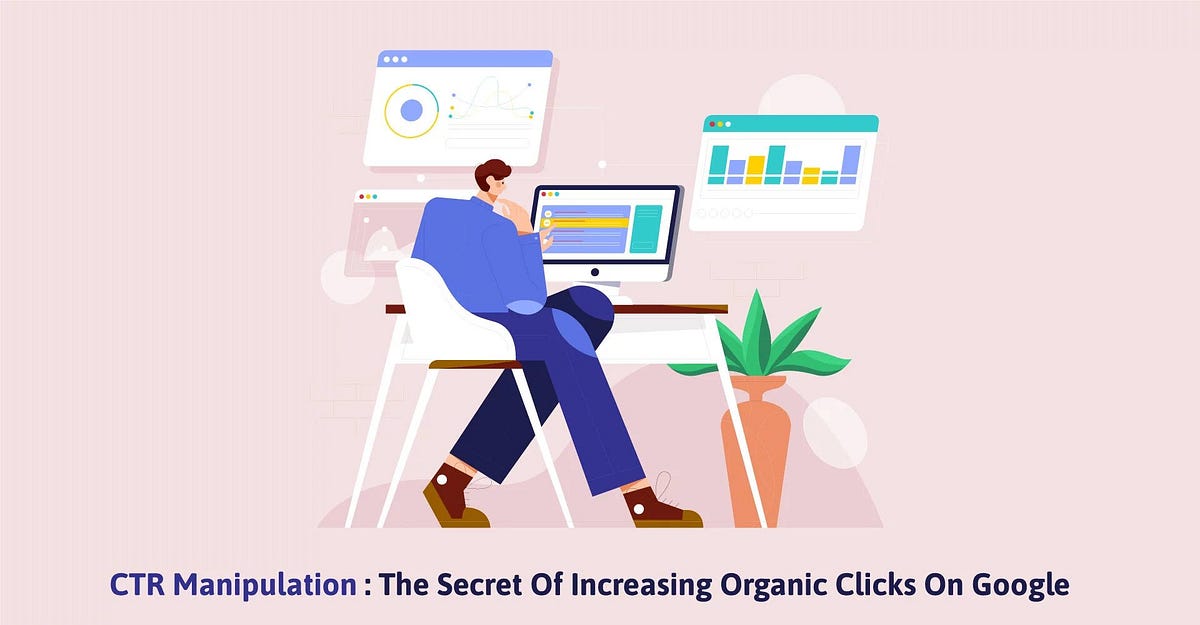Attain Success with Expert GMB CTR Manipulation Techniques
Wiki Article
Checking Out the Intricacies of CTR Adjustment: Methods to Enhance Organic Look Efficiency
In the realm of digital advertising and marketing, the realm of Click-Through Rate (CTR) control stands as an advanced yet pivotal technique that can dramatically affect the natural search efficiency of a website. As search engines become much more attuned to customer actions and intent, understanding the art of enhancing CTR emerges as a crucial skill for marketers and website proprietors alike.Understanding CTR and Its Value
A high CTR shows that your material is relevant and interesting to individuals, which can result in increased website traffic and higher positions on online search engine. On the other hand, a reduced CTR may signify that your material is not resonating with your target audience, potentially leading to reduced presence and minimized natural traffic.
Studying Customer Behavior for CTR Optimization
By delving right into how users connect with search engine results web pages (SERPs), marketing professionals can get important understandings to customize their methods for enhanced click-through prices (CTR) and natural search performance. One vital element to take a look at is the relevance of meta titles and descriptions to the user's search intent.Additionally, evaluating individual habits metrics such as bounce price, dwell time, and web pages per session can give a deeper understanding of exactly how appealing and appropriate the web content is to visitors. By identifying patterns in individual behavior, online marketers can fine-tune their web content strategy to far better straighten with user assumptions, thereby enhancing the likelihood of attracting clicks and driving natural website traffic. Basically, a data-driven approach to examining user actions is instrumental in enhancing CTR and improving general search efficiency.
Crafting Compelling Meta Descriptions
With an eager concentrate on customer engagement and search intent positioning, crafting compelling meta descriptions plays a crucial role in optimizing click-through rates (CTR) and improving natural search efficiency. Meta summaries are short snippets that summarize a web page's material and are displayed below the title tag on internet search engine results pages (SERPs) A well-crafted meta description not just lures customers to click through to the internet site yet likewise offers a clear sneak peek of what they can anticipate, increasing the probability of attracting relevant website traffic.To develop effective meta descriptions, it is vital to keep them succinct, commonly under 160 characters, and include relevant keyword phrases to signify to online search engine and users the material's relevance to their query. Additionally, including a call-to-action can prompt individuals to take the desired activity, whether it is clicking with to the site, authorizing up for a newsletter, or buying. By crafting compelling meta summaries that line up with individual intent and display the worth suggestion of the webpage, organizations can boost their CTR and drive even more organic website traffic to their website.
Leveraging Abundant Fragments for Higher CTR
Making use of abundant fragments purposefully can significantly increase click-through prices (CTR) in organic search results page by supplying individuals with improved sneak peeks of webpage web content. Rich snippets are additional pieces of information that come with search results, providing customers a peek of what they can expect to locate on a certain page. By integrating organized information markup, ctr manipulation internet site proprietors can enhance their content to appear even more plainly in search engine results pages (SERPs) with rich fragments, such as star ratings, product prices, event details, and extra.
Applying Schema Markup for CTR Increase
By improving your webpage with schema markup, you can additionally maximize the display screen of abundant snippets and raise your click-through rates (CTR) in natural search results. Schema markup gives search engines with thorough details about the web content on your website, helping them recognize its context and significance.Furthermore, schema markup can also boost your internet site's exposure in search engine result pages (SERPs) by allowing search engines to better interpret and offer your web content. This can cause greater positions and enhanced organic website traffic, as internet search engine compensate sites that supply clear and structured information with enhanced presence. Consequently, integrating schema markup right into your search engine optimization technique can be a powerful tool for improving your CTR and general natural search performance.
Conclusion
In verdict, recognizing the complexities of CTR adjustment is important for improving natural search performance. Evaluating user actions, crafting engaging meta summaries, leveraging abundant snippets, and executing schema markup work methods to improve CTR. By enhancing these components, websites can increase their presence and bring in more organic traffic. It is vital for businesses to continuously refine their CTR optimization methods to remain competitive in the on the internet landscape.
By delving into just how customers communicate with search engine results pages (SERPs), marketing professionals can acquire beneficial understandings to customize their methods for improved click-through rates (CTR) and natural search efficiency.With a keen focus on individual engagement and search intent alignment, crafting compelling meta descriptions plays a pivotal function in optimizing click-through prices (CTR) and improving organic search performance.Utilizing abundant bits purposefully can substantially increase click-through rates (CTR) in natural search outcomes by giving users with enhanced previews of page content.Moreover, schema markup can additionally improve your site's visibility in search engine result web pages (SERPs) by enabling search engines to better translate and offer your web content.
Report this wiki page